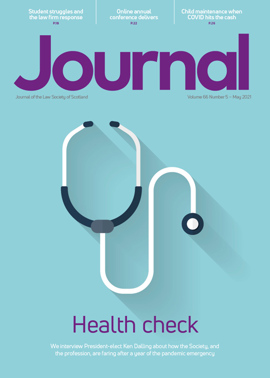Pushing the tech frontier

Legal technologists are unique among the Society’s specialist accreditations in having a regular forum to exchange issues and knowledge. Your not quite so techie editor was invited to listen in on the group’s most recent meeting and share some of what took place.
Much of the discussion centred on practical problems that are causing real issues, whether or not they match the priorities of the software developers. First up was the ability to share large files in a safe environment.
This arises because of the size of documentation now found in areas including building contracts with their technical schedules, M&A, and distribution agreements. But a commonly used platform won’t take technical schedules, and has a file size cap, so how do you digitally sign something that big? Some litigators too would like a “deal room” with collaborative space for counsel, solicitors and experts to share material.
“What was big data is not big data anymore,” observed Alan Stuart, who heads his own practice. “You can easily get terabytes of data being stored for long periods.”
Despite extensive trials, no one in the group had found a satisfactory solution, and the issue is exacerbated with more people working from home. “We’re trying to find a way that doesn’t involve circulating a CD or USB drive, but it will probably have to come back to that,” Sam Moore of Burness Paull reported.
Like herding contracts
A separate issue, raised by Andrew Mowlam of Sky, is contract life cycle management. This became acute during the lockdown when everyone started checking their termination rights. “There’s no such thing as a one size fits all tool,” he concluded. “Some vendors will tell you that, but trying to do this is really difficult. What it comes down to is a big structured database but the contracts themselves are not structured data.”
Group members despaired at trying to get less IT-minded colleagues to follow protocols that might make the task easier – “People naturally want to get contracts in as quickly as possible and that doesn’t always lend itself to following any process,” Andre Boyle of Millar & Bryce commented – and that still leaves the problem of how to deal with legacy contracts following a merger. Further complications arise if you have issues of rights management and licensing, and international territories.
“We have that issue,” agreed Zoe Fowlie at Vialex. “We haven’t found the perfect solution either. We would really benefit from something. We’ve done a similar thing recently with natural language processing and machine learning to try and get through bulks of contracts. There’s an ongoing view element that needs to be captured. It’s a tricky one.”
Here members felt the providers had the ability to come up with a solution, but weren’t sufficiently interested. Moore suggested it would need the merger of a software giant with one of the smaller, cutting-edge developers, but until then the consensus appeared to be that you might need to invest (heavily) in a bespoke system.
“A lot of the products haven’t been built with a view to integrating with other products,” Stuart added. “Often they haven’t thought of why people would want to. This whole idea of bundling and integration of all these products is becoming much more important.”
This was an area where Paul Mosson, director of Member Services and Engagement, suggested the Society could attempt to press for action through the LawscotTech collaborative group.
Feedback time
Jill Sinclair of DWF was keen to hear feedback from the profession on how the court systems for virtual hearings are working, now they have been in place for a little while. In fact this is to be reported at a special one day conference hosted by the Judicial Institute on 10 May, which the Journal will cover next month.
The Society in turn was interested in the group’s views on the value of the legal technologist specialist accreditation badge.
There are now 10 members, about two thirds of the number who have applied. We were told that unsuccessful applicants tend not yet to have the necessary depth and breadth of experience, but if they continue on their current path will probably achieve that. Some already have strong legal project management skills, and there was discussion about the accreditation that would best suit them – there is an ongoing discussion with some practitioners about the case for a legal project management certification.
Members clearly welcomed the forum as an opportunity for sharing – the few who missed the meeting did so with regret – and the Society is willing to take up with the relevant external bodies any issues reported.
The final suggestion, also greeted with approval, was that the group might engage in some pro bono technical support-type activity. Watch this space.
More information
For more information on the legal technologist accreditation, go to the specialisms section of the Society’s website






